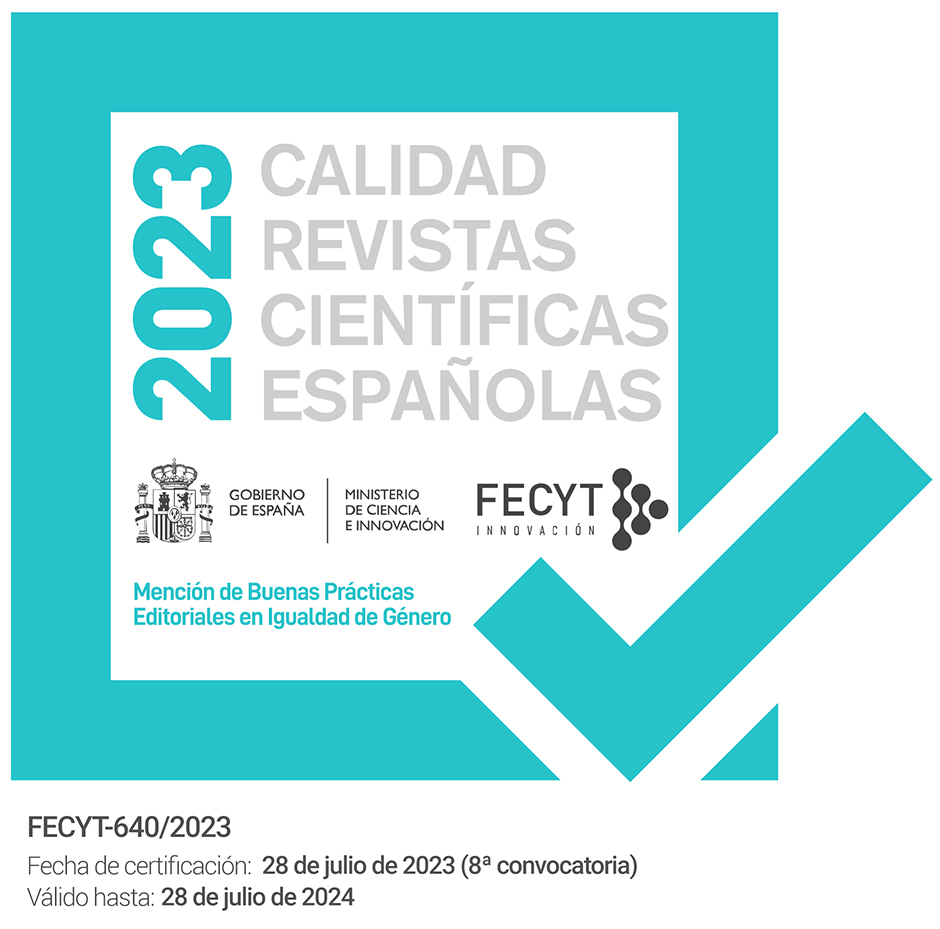Effectiveness and Safety Study of the Stimulating Agents of Erythropoyesis in the Treatment of Anemia Associated with Chronic Kidney Disease. Analysis of the Factors that Influence the Response
Keywords:
Epoetin beta, Darbepoetin alfa, Anemia, Kidney failure, chronic TreatmentAbstract
Objective: To evaluate the effectiveness and safety of darbepoetin α and epoetin β in anemia associated with CKD and to study the factors that influence the response.
Methods: It was carried out an observational, group and retrospective study. Patients ≥18 years of age with CKD who started treatment with ESA between January 1, 2014 and December 31, 2015. Maximum period of follow-up: 24 months. Sociodemographic, analytical, effectiveness and related to the cause of end of follow-up variables. Statistical analysis: multivariate logistic regression models, multiple linear regression. The study obtained a favorable opinion from the Aragón Clinical Research Ethics Committee (CEICA).
Results: 198 patients: 59.1% men, mean age: 75.3 ± 12.4 years, 60% stage 4 CKD, mean baseline Hb: 10.2 ± 1.3 g / dL. 71.2% started darbepoetin α (median dose: 18.7 (4.7-100.0) µg / weekly), 28.8% epoetin β (6000.0 (466.7-20,000.0) IU /weekly). The patients treated with darbepoetin α had more advanced stages of CKD (p <0.001); those who received epoetin β plus heart failure (HF) (p = 0.002) and ischemic heart disease (p = 0.028). 54.5% of the patients reached the therapeutic objective at 3 months. Treatment with statins (OR: 0.4 (95% CI: 0.174-0.996)) and insulin (OR: 2.6 (95% CI: 1.1-5.2)) were related to achieving the therapeutic response. Baseline Hb (Hb_b) and basal Fe (Fe_b) influenced ΔHb (%) (p <0.001 and 0.007, respectively. 2.5% had an ischemic cerebrovascular accident (CVA) in the 24-month follow-up. 35.9% (n = 71) continued treatment with ESA at 24 months: 40.4% with darbepoetin α vs 24.6% with epoetin β (p = 0.001).
Conclusions: ESAs safely correct and maintain Hb levels with moderate doses of ESAs.
Downloads
References
Kidney Disease: Improving Global Outcomes (KDIGO) Anemia Work Group. KDIGO Clinical Practice Guideline for Anemia in Chronic Kidney Disease. Kidney Inter Suppl. 2012; 2:279–335. [citado 27 mayo 2021]. Disponible en: https://kdigo.org/wp-content/uploads/2016/10/KDIGO-2012-Anemia-Guideline-English.pdf
European Best Practice Guidelines Working Group. Revised European best practice guidelines for the management of anaemia in patients with chronic renal failure. Nephrol Dial Transpl. 2004;19 (Suppl 2):1–47. Acceso web: https://doi.org/10.1093/nd/14.suppl_2.61
Cases A, Egocheaga MI, Tranche S, Pallarés V, Ojeda R, Górriz JL, et al. Anemia en la enfermedad renal crónica: protocolo de estudio, manejo y derivación a Nefrología. Nefrología. 2018; 38 (1):8-12. Acceso web: https://doi.org/10.1016/j.negfro.2017.09.004
Pertuz-Pinzón A, Ismael-Garcia C, Muñoz-Gómez C, Rico-Fontalvo J, Daza-Arnedo R, Pájaro-Galvis N, et al. Anemia en Enfermedad Renal Crónica. Archivos de medicina. 2021; 17 (2):1-9. [citado 27 mayo 2021]. Disponible en: https://dialnet.unirioja.es/servlet/articulo?codigo=7848785
Ficha técnica de Aranesp®. Breda: Amgen Europe. 2006. [citado 27 mayo 2021]. Disponible en: https://cima.aemps.es/cima/dochtml/ft/01185083/FT_01185083.html
Ficha técnica de Neorecormon®. Grenzach-Wyhlen: Roche Registration GmbH. 2012. [citado 27 mayo 2021]. Disponible en: https://cima.aemps.es/cima/dochtml/ft/97031026/FT_97031026.html
Locatelli F, Olivares J, Walker R, Wilkie M, Jenkins B, Dewey C, Gray SJ. Novel erythropoiesis stimulating protein for treatment of anemia in chronic renal insufficiency. Kidney Int. 2001; 60:741–7. Acceso web: https://doi.org/10.1046/j.1523-1755.2001.060002741.x
Akizawa T, Gejyo F, Nishi S, Iino Y, Watanabe Y, Suzuki M, et al. Positive Outcomes of High Hemoglobin Target in Patients With Chronic Kidney Disease Not on Dialysis: A Randomized Controlled Study. Ther Apher Dial. 2011;15(5):431–40. Acceso web: https://doi.org/10.111/j.1744-9987.2011.00931.x
Hirakata H, Tsubakihara Y, Gejyo F, Nishi S, Iino Y, Watanabe Y, et al. Maintaining high hemoglobin levels improved the left ventricular mass index and quality of life scores in pre-dialysis Japanese chronic kidney disease patients. Clin Exp Nephrol. 2010;14(1):28–35. Acceso web: https://doi.org/10.1007/s10157-009-0212-4
European Medicines Agency. Post-authorisation Evaluation of Medicines for Human Use. Public Statement. European Medicines Agency starts review of the safety of epoetins. 2007. [citado 27 mayo 2021]. Disponible en: https://www.ema.europa.eu/en/human-regulatory/post-authorisation
Gorostidi M, Santamaría R, Alcázar R, Fernández-Fresnedo G, Galcerán JM, Goicoechea M, et al. Documento de la Sociedad Española de Nefrología sobre las guías KDIGO para la evaluación y el tratamiento de la enfermedad renal crónica. Nefrología. 2014;34(3):302–16. Acceso web: https://doi.org/10.3265/Nefrologia.pre2014.Feb.12464
Minutolo R, Conte G, Cianciaruso B, Bellizzi V, Camocardi A, De Paola L, et al. Hyporesponsiveness to erythropoiesis-stimulating agents and renal survival in non-dialysis CKD patients. Nephrol Dial Transpl. 2012; 27:2880–6. Acceso web: https://doi.org/10.1093/ndt/gfs007
Kalantar-Zadeh K, Lee GH, Miller JE, Streja E, Jing J, Robertson JA, et al. Predictors of Hyporesponsiveness to Erythropoiesis-Stimulating Agents in Hemodialysis Patients. Am J Kidney Dis. 2009;53(5):823–34. Acceso web: https://doi.org/10.1053/j.ajkd.2008.12.040
Jauréguy M, Choukroun G. Factors affecting the response to erythropoiesis-stimulating agents. Nephrol Ther. 2006;2 (Suppl 4): S274-82.
Johnson DW, Pollock CA, Macdougall IC. Erythropoiesis-stimulating agent hyporesponsiveness. Nephrology. 2007; 12:321–30. Acceso web: https://doi.org/10.1111/j.1440-1797.2007.00810.x
Pfeffer MA, Burdmann EA, Chen CY, Cooper ME, de Zeeuw D, Eckardt KU, et al; TREAT investigators. A trial of darbepoetin alfa in type 2 diabetes and chronic kidney disease. N Engl J Med. 2006; 361:2019–32. Acceso web: https://doi.org/10.1056/NEJMoa0907845
Locatelli F, Aljama P, Canaud B. Anemia Working group of European Best Practice (ERBP). Target haemoglobin to aim for with erythropoiesis-stimulating agents: a position statement by ERBP following publication of the Trial to Reduce Cardiovascluar Events with Aranesp Therapy (TREAT) study. Nephrol Dial Transpl. 2010; 25:2846–50. Acceso web: https://doi.org/10.1093/ndt/gfq336
Locatelli F, Barany P, Covic A, De Francisco A, Del Vecchio L, Goldmith D, et al. On behalf of the ERA-EDTA ERBP Advisory Board. Kidney disease: Improving global outcomes guidelines on anaemia management in chronic kidney disease: A European renal best practice position statement. Nephrol Dial Transplant. 2013; 28:1346-59. Acceso web: https://doi.org/10.1093/ndt/gfq033
Milovanov IuS, Milanova LIu. Long-acting erythropoetin efficacy in the treatment of nephrogenic anemia in patients with chronic kidney disease during predialysis stage. Ter Arkh. 2012;84(6):48–52.
Palmer SC, Saglimbene V, Craig JC, Navaneethan SD, Strippoli GF. Darbepoetin for the anaemia of chronic kidney disease. In: Cochrane Database of Systematic Reviews [Internet]. John Wiley & Sons, Ltd; 2014. [citado 27 mayo 2021]. Disponible en: http://onlinelibrary.wiley.com/doi/10.1002/14651858.CD009297.pub2
CREATE Investigators. Scherhag A, Burger HU, Tsakiris D, Macdougall IC, Eckardt KU, CLyne N, et al. Normalization of haemoglobin level in patients with chronic kidney disease and anemia. N Engl J Med. 2006; 355:2071–84. Acceso web: https://doi.org/10.1056/NEJMoa062276
CHOIR Investigators. Reddan D, Wolfon M, Sapp S, Barnahart H, Tang KL, Szczech L SA. Correction of anemia with epoetin alfa in chronic kidney disease. N Engl J Med. 2006;355(20):2085–98. Acceso web: https://doi.org/10.1056/NEJMoa065485
Parfrey PS. Erythropoietin-stimulating Agents in Chronic Kidney Disease: A Response to Hyporesponsiveness. Semin Dial. 2011;24(5):495–7. Acceso web: https://doi.org/10.1111/j.1525-139.2011.00949.x
Padullés-Zamora N, Comas-Sugrañes D, Pineda-Yuste MM, Jódar-Masanés R, Martínez-Castelao A. Utilización de eritropoyetina beta pegilada en enfermedad renal crónica en estadio 3, 4 o 5 no-D. Nefrología. 2012;32(2):221–7. Acceso web: https://doi.org/10.3265/Nefrologia.pre2012.Jan.10946
Cases-Amenós A, Martínez-Castelao A, Fort-Ros J, Bonal-Bastons J, Ruiz MP, Vallés-Prats M, et al. Prevalencia de anemia y su manejo clínico en la enfermedad renal crónica estadios 3-5 no diálisis en Cataluña: estudio MICENAS I. Nefrología. 2014; 34(2):189-98. Acceso web: https://doi.org/10.3265/Nefrologia.pre2013.Dec.12261
Einerson B, Nathorn C, Kitiyakara C, Sirada M, Thamlikitkul V. The efficacy of ascorbic acid in suboptimal responsive anemic hemodialysis patients receiving erythropoietin: a meta-analysis. J Med Assoc Thai. 2011; 94 (Supl 1): S134-46.
Sirken G, Kung SC, Raja R. Decreased erythropoietin requirements in maintenance hemodialysis patients with statin therapy. ASAIO J. 2003; 49:422–5.
Honda H, Kimata N, Wakai K, Akizawa T. Associations Among Epoetin Therapy, Inflammation, Nutritional Status and Mortality in Patients on Hemodialysis. J Ren Nutr. 24(5):322–9. Acceso web: https://doi.org/10.1053/j.jrn.2014.03.009
Rossert J, Gassmann-Mayer C, Frei D, McClellan W. Prevalence and predictors of epoetina hyporesponsiveness in chronic kidney disease patients. Nephrol Dial Transpl. 2007; 22:794–800. Acceso web: https://doi.org/10.1093/ndt/gfl716
Wilhelm-Leen ER, Winkelmayer WC. Mortality Risk of Darbepoetin Alfa versus Epoetin Alfa in Patients with Chronic Kidney Disease: Systematic Review and Meta-Analysis. Am J Kidney Dis. 2015;66(1):69–74. Acceso web: https://doi.org/10.1053/j.ajkd.2014.12.012
Heras M, Fernández-Reyes MJ, Sánchez R, Guerrero MT, Molina A, Rodríguez MA, et al. Ancianos con enfermedad renal crónica: ¿qué ocurre a los cinco años de seguimiento? Nefrología. 2012;32(3). Acceso web: https://doi.org/10.3265/Nefrologia.pre2012.Jan.10994
Downloads
Published
How to Cite
Issue
Section
License
Copyright (c) 2021 Cristina Pérez Diez

This work is licensed under a Creative Commons Attribution-NonCommercial-ShareAlike 4.0 International License.
La revista Pharmaceutical Care España se publica bajo una licencia «Creative Commons, Reconocimiento, No Comercial y Compartir Igual 4.0 Internacional» (CC BY-NC-SA 4.0)», que permite a otros compartir el trabajo con un reconocimiento de la autoría del trabajo y la publicación inicial en esta revista (con excepción de los usos comerciales).
Los autores que publican en esta revista están de acuerdo con los siguientes términos:a) Los autores conservan los derechos de autor (derechos morales) y garantizan a la revista el derecho de ser el primer soporte documental publicado del trabajo.
b) Se permite y anima a los autores a difundir la versión del trabajo revisado por pares y aceptada para su publicación (por ejemplo, en repositorios institucionales o temáticos), recomendando hacerlo con la versión final del editor “pdf”, “html” o “xml”).









